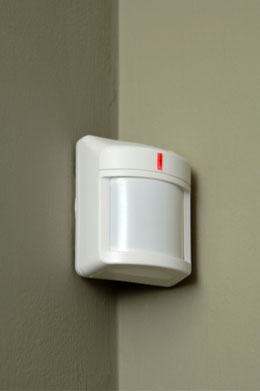
Sensors are devices which measure a physical quantity, convert it to signal or stimulus, and respond to it in a specified manner. There are various types of sensors, ranging from motion sensors in home security systems to oxygen sensors in cars. The popularity of these technological marvels can be attributed to spy flicks to a significant extent. Although many of us get fascinated by these devices, not many of us know how they work, or how they detect minor movements.
How do Motion Sensors Work?
One of the most popular sensors used in a range of day-to-day appliances today, is the motion sensor. Also referred to as motion detectors, motion sensors are most often used in commercial establishments and home security systems. The device has the ability to quantify motion and alert the individual about any movement, within a stipulated range, in the surroundings. Basically there are two types of sensors: active and passive. The sensor working principle in each of these devices varies to a certain extent.
Active Sensors a.k.a. Radar-based Motion Detectors
These sensors use ultrasonic sound waves to track any movement in the specified range. The detectors emit ultrasonic sound waves and wait for the energy to be reflected back. In a door powered by a radar-based motion detector, ultrasonic sound waves are emitted continuously. The detector is attached in such a way that the waves cover considerable area in front of the door. If someone tends to stand in front of the door, the waves get blocked by his presence and get reflected much sooner than the normal stipulated time. The sensor ‘senses’ this change in the normal pattern and the door opens automatically. It works on a simple principle, wherein any disturbance in normal pattern of waves triggers the necessary action. In case of automated doors, the sensor opens the door when its pattern is disturbed. In some cases, the disturbance in normal pattern closes all exits, while in some, it triggers an alarm.
Passive Sensors a.k.a. Pyroelectric Detectors
These sensors read changes in infrared energy levels in the surroundings in order to detect the presence of any individual. Basically, all living beings emit infrared energy (heat). Passive sensors are programmed to detect sudden changes in the temperature of surroundings. Changes in energy levels are detected by a photo detector, which converts the wavelengths to electric current and transfers it to a small computer unit present in the device. Normally the detector is programmed to detect emissions in the range of 8 to 12 micrometers. The detector triggers the alarm as soon as the photo detector ‘senses’ large variations in infrared energy levels in the surroundings.
These sensors are just getting better with time. In some motion sensors available today, ultrasonic and infrared waves are replaced by sound and echolocation, wherein sound waves are emitted from the device and their echo is measured to detect human presence.
How do Sensors in an ABS Work?
Introduction of anti-lock braking system (ABS) in cars has decreased the number of accidents and fatalities to a great extent. This ABS mechanism is also powered by wheel-shaped sensors, which monitor the speed of wheels and send signals to ABS control module in alternating current (AC) format. When these signals reach the module, they are converted to digital format and each wheel speed is compared. If the speed of a particular wheel doesn’t tally with that of others, the ABS module interprets that the wheel is losing traction and triggers necessary action in the form of applying break or traction control.
In today’s world, with sensors being used in even the most basic appliances and devices, such as the sprinkler system, it is important to understand their working mechanism. If you are not well-versed with the working principle of these sensors, it won’t be possible for you to make full use of its potential in the manner you want.